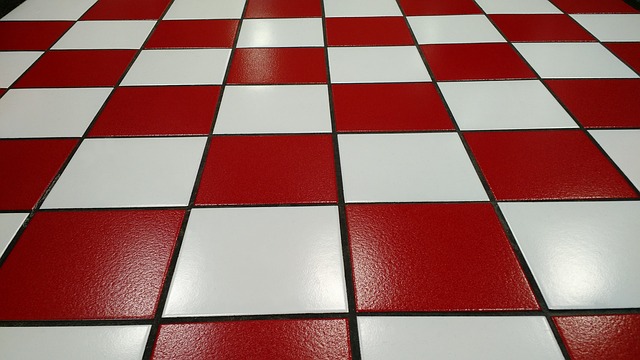Tiles Flooring
Tiles are pre-cast units of pottery or cement concrete or terrazzo. They are produced in square, polygonal, rectangular, and various other shapes, sizes, and thicknesses. Pre-cast units of terrazzo tiles are also known as mosaic tiles. The tiles made of pottery are known as white-glazed tiles. Tile flooring is mostly used in residential buildings, office buildings, hotels, etc. White glazed tiles are commonly used in bathrooms, kitchens, swimming pools, etc.

In the case of mosaic tiles, need to polish and fixed them in their position. Whereas, white glazed tiles are not required to polish. Floor tiles can be available in different colors. Usually, some colorful art is printed over it to get a better decorative look.
Read Also: Different Types of Flooring
Method of Making Tiles Flooring
The method of making tiles flooring is almost similar to the making of stone flooring. Tile floorings require hard subgrade, before making a hard surface the ground is leveled, watered, and rammed properly.
A hard subgrade surface, which may be in the form of R.C.C. slab or cement concrete. Well consolidated layer of lime concrete, 100 mm to 150 mm thick covered by 2.5 cm to 4 cm thick cement concrete layer can serve the purpose of hard sub-grade.
Over the prepared subgrade surface, a thick layer of lime mortar about 12 mm to 25 mm is spread to act as bedding mortar. Now, it is almost ready to receive the tiles over it. Before placing tiles over it, this mortar is allowed to harden a bit and then a neat cement slurry is spread over it with the help of a brush or otherwise.
Now readymade tiles are laid on this mortar layer by applying thin cement paste along all of its sides. The tiles are gently tapped. The cement that oozes out through the joints due to tapping should be cleaned instantly.
After 2 or 3 days of laying the tiles, all its joints should be rubbed with carborundum stone so that a smooth finished surface of the floor may be obtained. The entire surface of the floor is then rubbed by hand or by a power-driven rubbing machine. The process of rubbing is also known as the polishing of the surface. Finally, The rubbed or polished surface should be washed with a solution of soap.
Advantages
The following are the advantages of tile flooring:
1. This floor is non-absorbent.
2. Good looking, it gives a decorative look.
3. Durable.
4. Maintainance work is easy.
Disadvantages
The following are the advantages of tile flooring:
1. It is very costly.
2. Maintenance cost is high.
3. It provides a slippery surface.
4. Skilled labor required.
Characteristics of a Good Flooring Tiles
The following are the characteristics of good flooring tiles:
1. It should be hard enough.
2. It should be free from any bends and cracks.
3. It should be proper in shape and size.
4. It should have good durability properties.
5. It should have good heat-resistant properties.
6. They should produce a clear ringing sound when struck by each other.
7. It should be well burnt.
8. It should be uniform in color.
FAQs
How many types of floor tiles are available?
There are several types of floor tiles are available in the market. the following are the 13 types of floor tiles:
- Ceramic Tiles
- Porcelain Tiles
- Mosaic Tiles
- Granite Tiles
- Marble Tiles
- Terrazzo Tiles
- Onyx Tiles
- Quartzite Tiles
- Travertine Tiles
- Quarry Tiles
- Slate Tiles
- Sandstone Tiles
Which types of tiles are best for shower walls?
Porcelain and glazed ceramic tiles are mostly recommended for use in shower walls. Glass tiles are also preferred for shower walls, as they give an attractive look to the wall.





Read More: